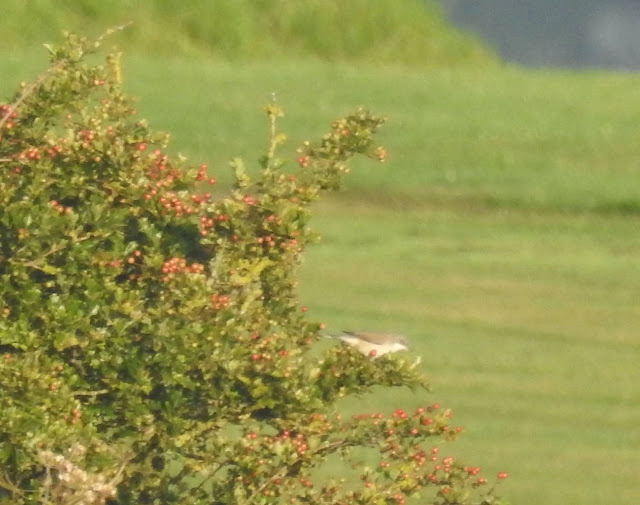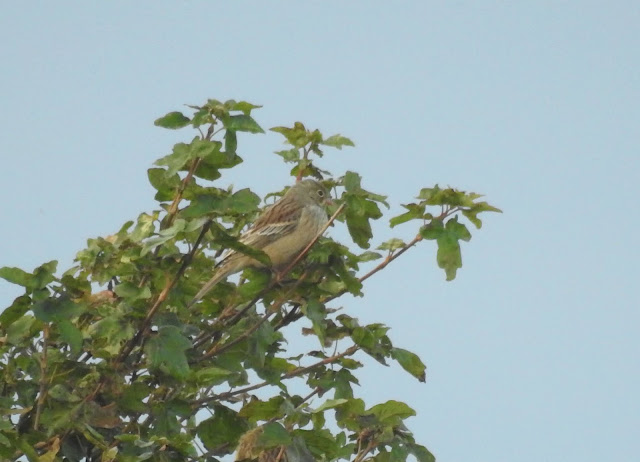Am delighted to be able to finally publish my insect catch-up post. I have already blogged about one of the most exciting finds, the Beer Head Southern Migrant Hawker, but there's plenty more to tell...
As I have already mentioned a species of dragonfly, that's where I will start.
Odonata
You'll see a similar theme with all three of these sub-sections - the cold spring of 2021! Am sure you all recall those raw easterly winds that hampered even the blue days of April and May, with temperatures not really rising until the end of May. This didn't help insect numbers at all, or birds or flora for that matter. It some years I see my first Large Red Damselflies and/or Broad-boded Chasers in April, but not a single Odonata for me in April 2021.
However once the little beasties finally did start to emerge, it turned out to be an ok season. Scarce Chasers had a great season, especially at Lower Bruckland Ponds, and there seemed to be more Golden-ringed Dragonflies around than usual too. Sadly, although there is technically still time, no Ruddy Darters for me on patch this year - I do miss that unique colour. Autumn is turning out good as well, with loads of Migrant and Southern Hawkers around. Hope you enjoy my pics...
 |
| Scarce Chaser |
 |
| Scarce Chaser up close! |
 |
| Scarce Chaser and Black-tailed Skimmer |
 |
| Broad-bodied Chaser |
 |
| White-legged Damselfly pair |
 |
| Golden-ringed Damselfly |
 |
| Female Southern Hawker |
Butterflies
I don't think I have ever seen so few spring butterflies. I didn't see any spring Holly Blues, only three sightings of Orange-tip (compared to 2020 when they were abundant) and just the one Brimstone. A truly shocking start to the year, although hardly surprising given the persistent cold wind.
Thankfully however the year has imrpoved. And the really hot spell we experienced in July coincided with peak Hairstreak season! Unfortunately my quest for a patch White-letter once again failed, but we enjoyed a bumper year for Purple Hairstreaks. The small population I found near Lower Bruckland Ponds in 2020 showed a lot better this year, with my highest count being five on 21st. Even better however were the two I discovered on the evening of 19th at Black Hole Marsh, in small Oaks by Tower Hide...
 |
| Purple Hairstreak Lower Bruckland Ponds |
 |
| Purple Hairstreak Black Hole Marsh |
With my mind still back in July, Marbled Whites, Small Skippers, Gatekeepers and Ringlets all seemed to have an excellent year too. And within the last month I've been blown away by the numbers of Small Tortoiseshells, Red Admirals and Small Whites - the local Buddleia's have been absolutely awash, terrific to see. There's been a few Painted Ladies around too, not loads but I was seeing up to ten on some days in early August.
 |
| Marbled White Lower Bruckland Ponds |
 |
| Painted Lady |
 |
| Painted Lady x 2! |
 |
| Red Admiral |
Moths
Considering the poor state of affairs with the above two orders during spring, I didn't even consider dusting the moth trap off during March/April/May. All I was reading on social media and other wildlife blogs during April/May were how few moths were on the wing, and that some of the early species (Early Grey, Hebrew Character, Common Quaker, etc) hardly emerged at all. Worrying, and I can't help but wonder what effect it will have on next year?
I first put the trap out on 15th June, and since then have been running it when I've been able to on suitable weather-nights. Just routine fare really for the first few months, although it's always exciting to see each species emerge as the year progresses...
 |
| Canary-shouldered Thorn |
 |
| Mocha |
 |
| Large Emerald |
 |
| Four Buff-tips! |
 |
| Four male Four-spotted Footman |
 |
| Sallow Kitten |
 |
| Small Elephant Hawkmoth |
No new species the garden were recorded until the night of 19th August, when an Oak Eggar was a wonderful furry surprise...
 |
| My first view of it |
 |
| Oak Eggar and Shuttle-shaped Dart |
Then during the night of 25th/26th, I captured two more new ones for the garden, although neither are all that rare...
 |
| Barred Hook-tip |
 |
| Bulrush Wainscot |
And then last night happened, which gave me another new moth for the garden. At 6am this morning I turned over an egg box that revealed the absolutely holy grail. Sure, it may not be the rarity it once was, but I was just not ready for the adrenalin rush the sight of this beast gave me. I give you the moth whose name literally means "beyond compare". The Clifden Nonpareil...
 |
| Otherwise known as the Blue Underwing |
It was so massive. Huge. After I took this photo I managed a peak of it's blue hindwing, and even better, its striking underwing with a big white stripe. But I am afraid there are no more pics of it, because quite simply, I lost the plot. I was so encapsulated and blown away by it, I basically didn't do what I have done hundreds of times before, pot a moth. Instead I was just gazing at it from every angle, giving it the odd poke, and then it flew off. This wasn't all bad though, because I got to see it in flight. An amazing flopping flight, and looking more bat-sized than moth-sized. What a delight.
Personally I've recorded very few immigrants, the odd Silver Y, just one Hummingbird Hawkmoth (not trapped) and two Dark Sword Grass on 4th/5th August. Go back in time even more however and there is one large immigrant species that for some reason never got a mention on this blog, but very much deserves it..
On 15th September 2020 my Hawkmoth tally for the garden was nine species (Poplar, Eyed, Elephant, Small Elephant, Privet, Lime, Hummingbird, Bedstraw [3/8/19], Striped [two - 16&17/6/16]). On the morning of 16th the tenth was added. I knew number ten was probably going to be either this species or Pine Hawkmoth, which I really should have recorded before now, but it didn't make the discovery any less exciting! The 11 year wait was over...
 |
| Convolvulus Hawkmoth! A bit battered but what a beast. |
And there we go! What a post, and it's been a delight to relive it all. Thanks for reading and be sure to check back soon for more :-)































































